
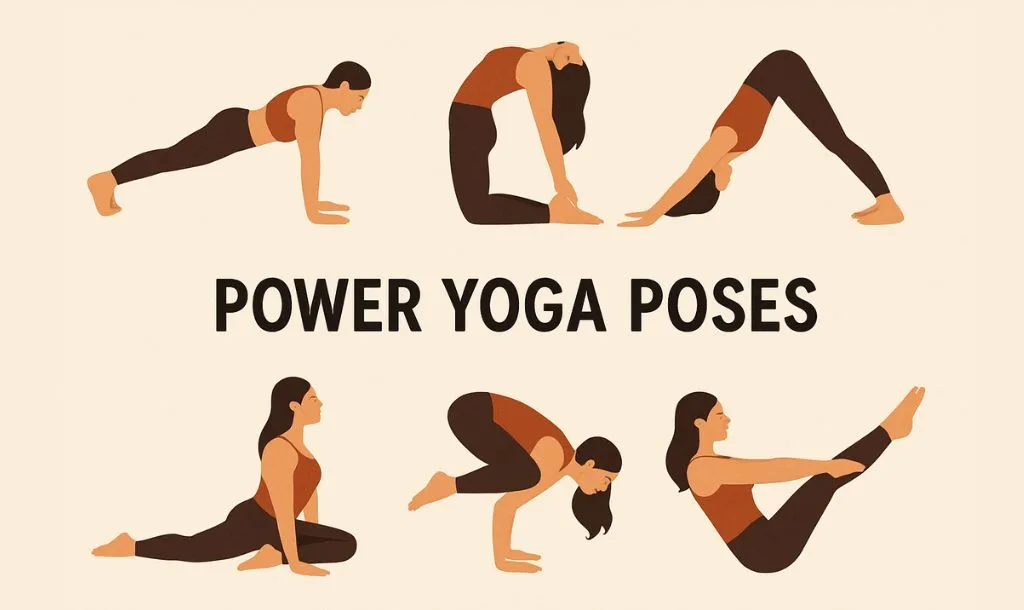
Ready to build serious strength through yoga poses? If you’re looking for a workout that combines physical intensity and mindful focus, Power Yoga is your answer. This dynamic style integrates strength training, flexibility work, and mental discipline into one powerful practice, making it ideal for anyone looking to challenge both body and mind.
Whether you’re a beginner eager to build a strong foundation or an athlete aiming to boost performance, practicing Power Yoga poses can elevate your strength, flexibility, balance, and mental clarity. And that’s not all! Specific Power Yoga sequences can increase stamina, enhance endurance, and support healthy weight loss by keeping your body engaged from start to finish.
In this guide, you’ll explore essential Power Yoga poses for all levels—from accessible beginner-friendly routines to advanced arm balances and calorie-burning flows.
Learn more about Power Yoga in this detailed guide!
[inline-CTA-1]
Power Yoga is all about strength, stamina, and movement. The following poses set the foundation of a balanced Power Yoga session, whether you're new to the mat or looking to refine your practice.
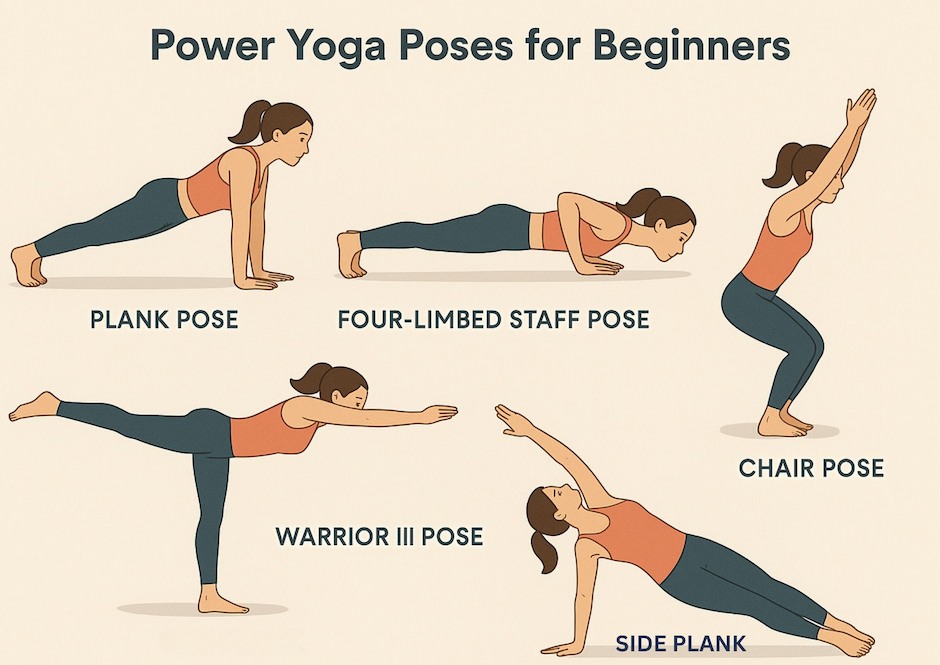
These foundational asanas help build muscular endurance, improve alignment, and prepare your body for more complex movements.
This pose builds full-body strength, especially in the core and shoulders.
Beginner tip: Drop the knees if needed to maintain proper form and reduce wrist strain.
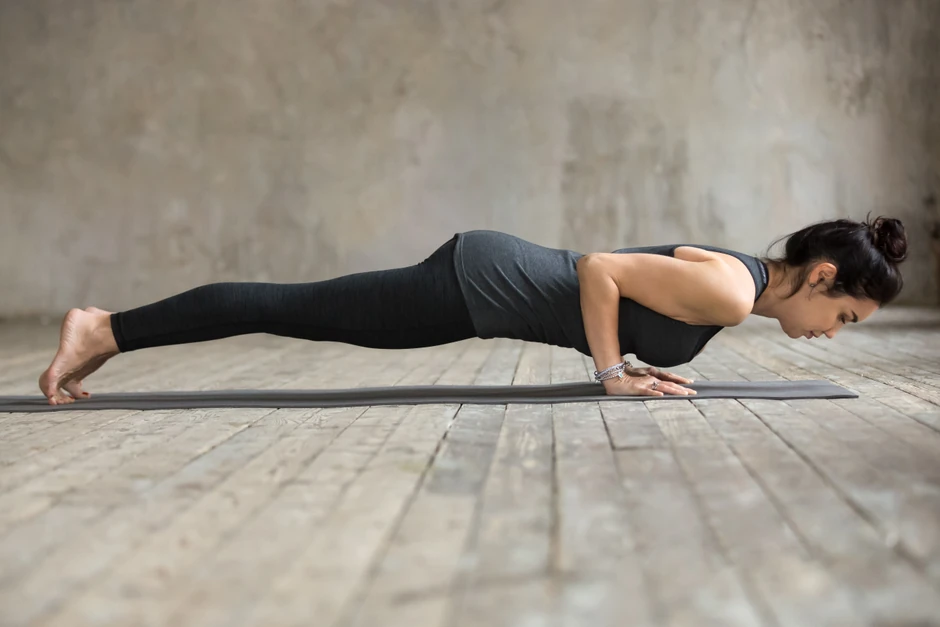
This pose strengthens the arms, shoulders, and core while prepping for advanced transitions.
Beginner tip: Lower halfway or keep knees on the mat to protect your shoulders.
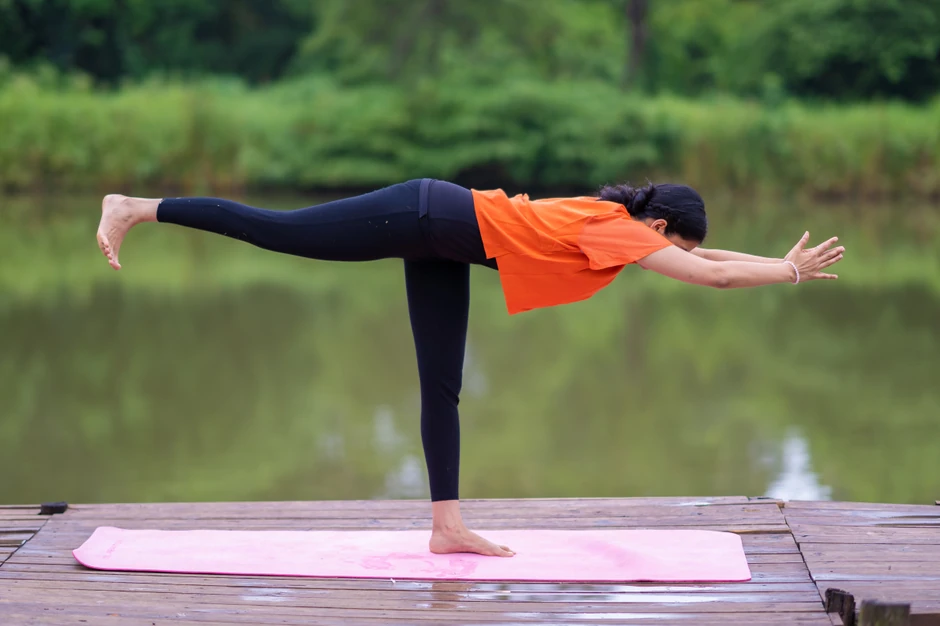
This is a great pose to develop balance and leg strength.
Beginner tip: Use a wall or chair for balance.

This pose engages glutes, quads, and core—great for lower body stamina.
Beginner tip: Shift your weight into the heels to protect the knees.
This pose builds arm and oblique strength while enhancing balance.
Beginner tip: Drop the bottom knee for added stability.
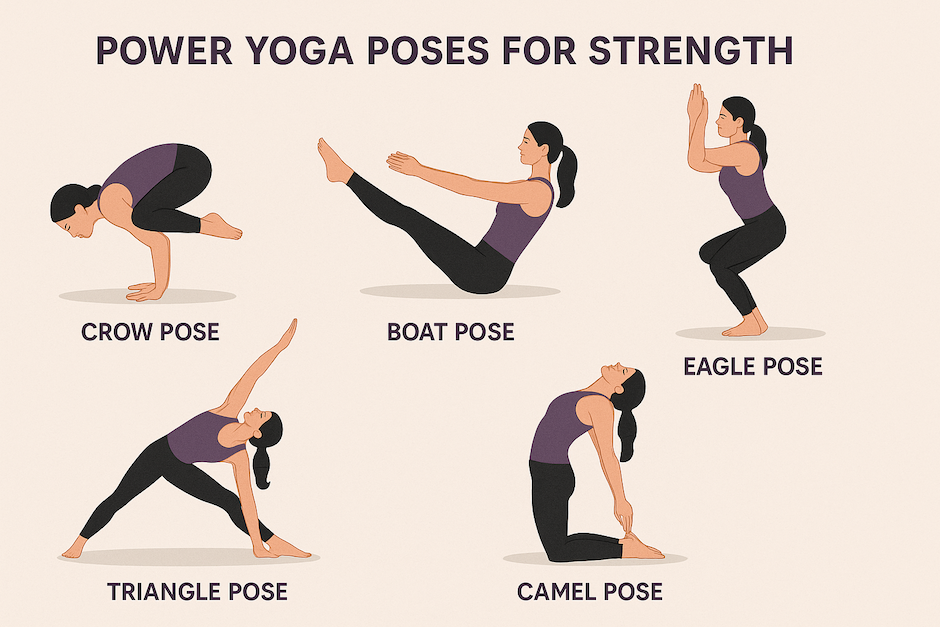
With the foundations in place, these intermediate poses will further challenge your balance, coordination, and core strength. They're perfect for building resilience and preparing your body for more advanced movements.
This pose introduces arm balancing by engaging core and wrist strength.
Tip: Place a block under your feet or a cushion in front for confidence.

This is a great pose to fire up deep core muscles and strengthen the hip flexors.
Tip: Hold the backs of thighs or keep knees bent to build strength gradually.
This pose enhances lower body strength, balance, and mental focus.
Tip: Keep toes on the floor as a “kickstand” if a full wrap isn’t accessible.
This pose helps build flexibility in the spine and strengthens the legs while challenging balance.
Tip: Use a block to bring the floor closer and maintain spinal alignment.
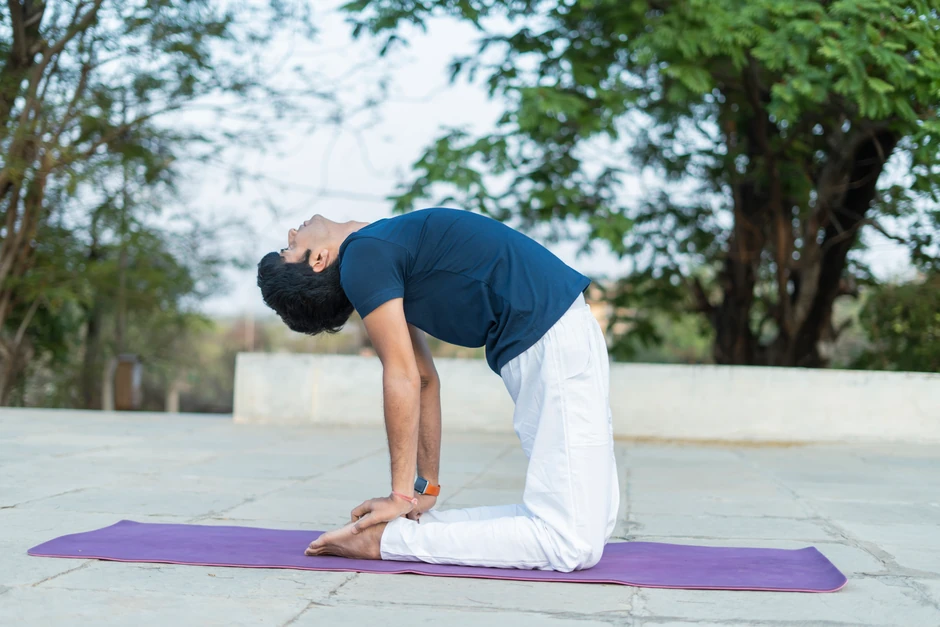
This pose opens the chest and strengthens the back and glutes.
Tip: Keep the hands at the lower back instead of reaching for heels if flexibility is limited.
These poses not only build strength—they refine your control, improve posture, and cultivate the mental discipline needed for more advanced Power Yoga sequences.
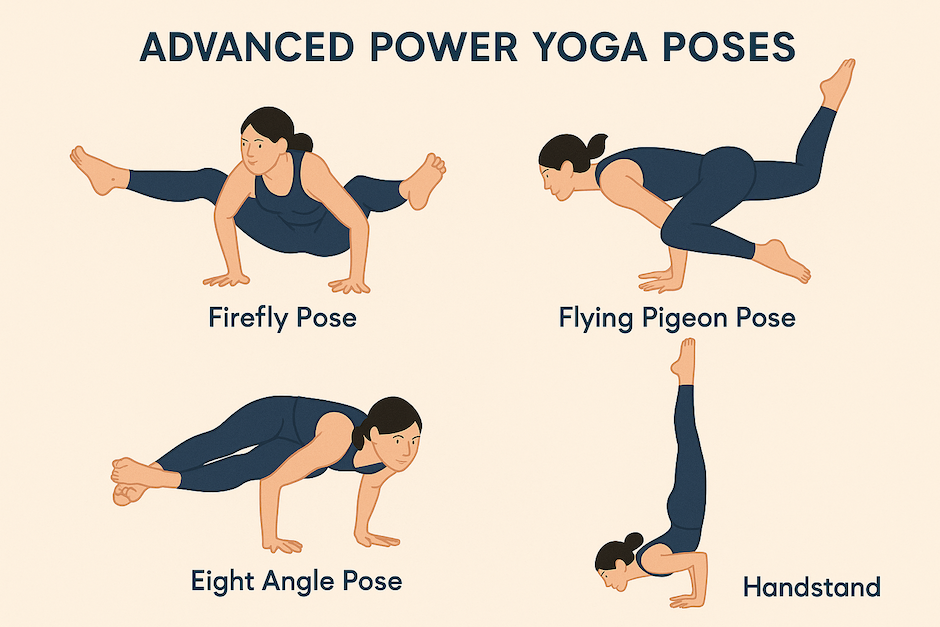
These advanced asanas test your coordination, endurance, and control—and require patience, consistent practice, and proper warm-up.
These poses push the boundaries of upper body and core strength while demanding mental focus and refined balance.
This pose opens the hips and requires serious core and arm control.
Tip: Warm up with hamstring stretches and hip openers like Garland Pose.
This pose combines twisting, arm strength, and core stability in one move.
Tip: Practice seated twists and low plank holds for control.
This pose engages the glutes, hips, and shoulders in a deep balancing challenge.
Tip: Use a block under your front foot to help initiate lift-off.
The ultimate test of strength, balance, and body awareness.
Tip: Practice against a wall for safety and confidence.
It’s best to always master the foundational and intermediate poses before attempting these advanced movements.
To ensure proper form and reduce injury risk, book a free 1-on-1 session with a certified coach!
Power Yoga is one of the most effective yoga styles for weight loss as it combines strength, cardio, and flexibility into one fast-paced practice. The key is consistency, intensity, and choosing sequences that challenge large muscle groups while keeping your heart rate up.
Want to lose weight with Power Yoga? Book this free group class today!
These poses and flows are designed to build heat, engage multiple muscle groups, and promote fat loss.
This dynamic full-body sequence targets strength and cardio.
Tip: Add in lunges, chaturangas, and warrior poses for intensity.
Constant core and upper body activation builds muscle and burns calories.
Tip: Keep transitions smooth to maintain an elevated heart rate.
This sequence combines strength and endurance in the legs, glutes, and core.
Tip: Include Chair, Warrior II, and Crescent Lunge for sustained burn.
This is a great flow to engage the core and increase cardiovascular effort.
Tip: Flow side to side with breath, limiting rest between reps.
Fires up the core—especially the deep abdominal muscles.
Tip: Add arm and leg movements or hold for extended breaths to amplify the burn.
These flows promote high-calorie expenditure while strengthening lean muscle, which supports long-term metabolic function.
[inline-CTA-2]
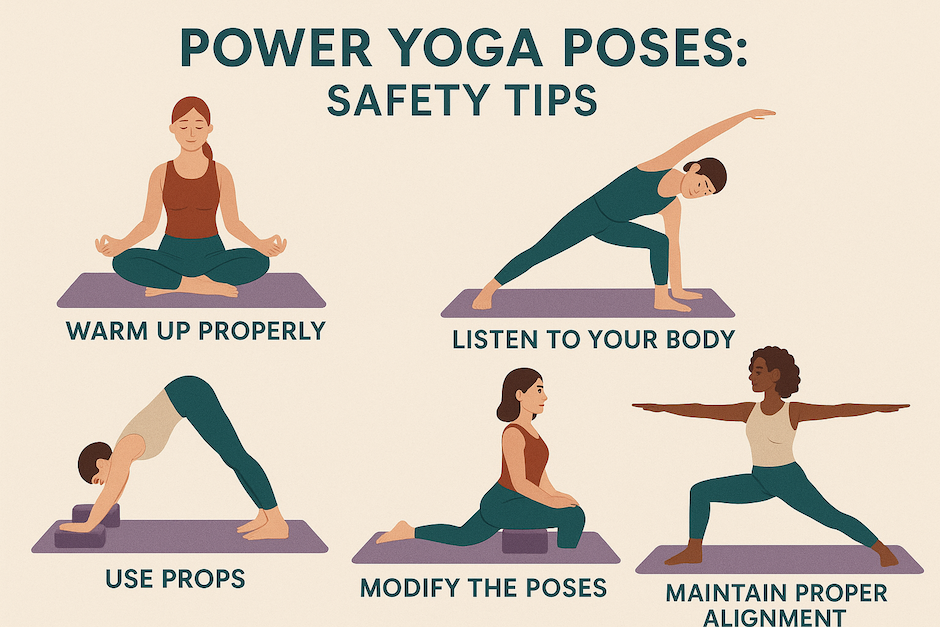
Power Yoga is physically demanding and an intense practice. When done without awareness, proper form, modifications, or guidance, it can lead to strain or injury. These safety tips and modifications ensure you stay strong and safe on your journey.
Props aren’t just for restorative yoga—they’re powerful tools for making Power Yoga accessible and sustainable.
Practicing with awareness and support ensures you build a practice that’s not only strong—but sustainable for years to come.
Whether your goal is strength, flexibility, or weight loss, a smart progression plan will help you stay motivated and avoid burnout or injury.
This structured progression can help build physical strength, stamina, balance, flexibility, and mental focus that Power Yoga is known for. The key is to move with intention and consistency. Each stage prepares your body and mind for the next, ensuring a safe and sustainable practice.
The most effective poses are:
These build essential strength while teaching balance, alignment, and endurance—all core to Power Yoga.
Poses and flows that engage multiple muscle groups are the most effective, including:
These keep your heart rate high and muscles engaged throughout the session.
Typically, Power Yoga poses are held for 3–8 breaths to maintain flow and intensity. Some poses may be repeated in sequence for endurance, while others transition fluidly to keep the heat building.
Absolutely. Every advanced pose can (and should) be scaled:

Receive personalized guidance tailored to your unique fitness goals, live with a dedicated coach—no credit card required.